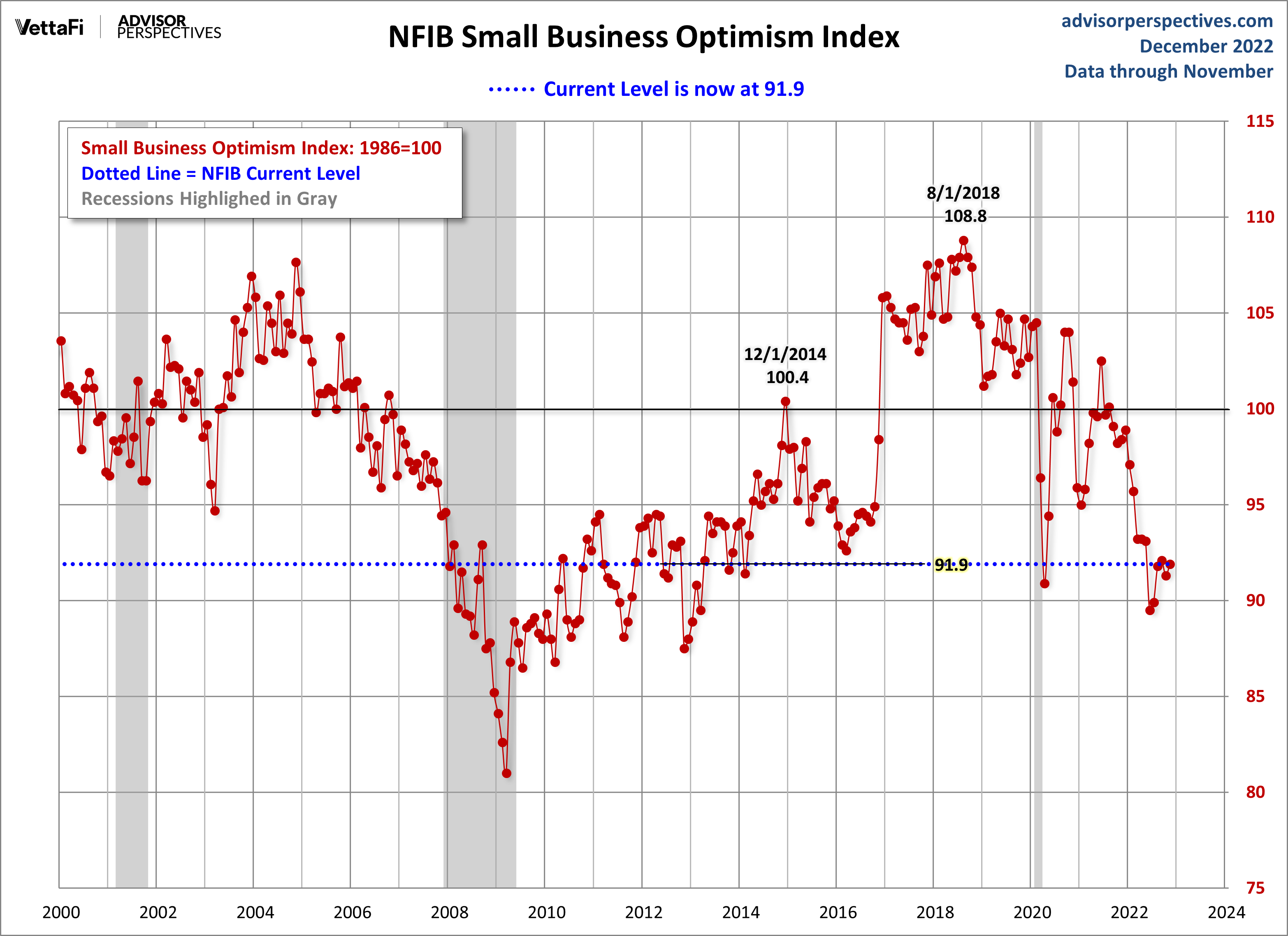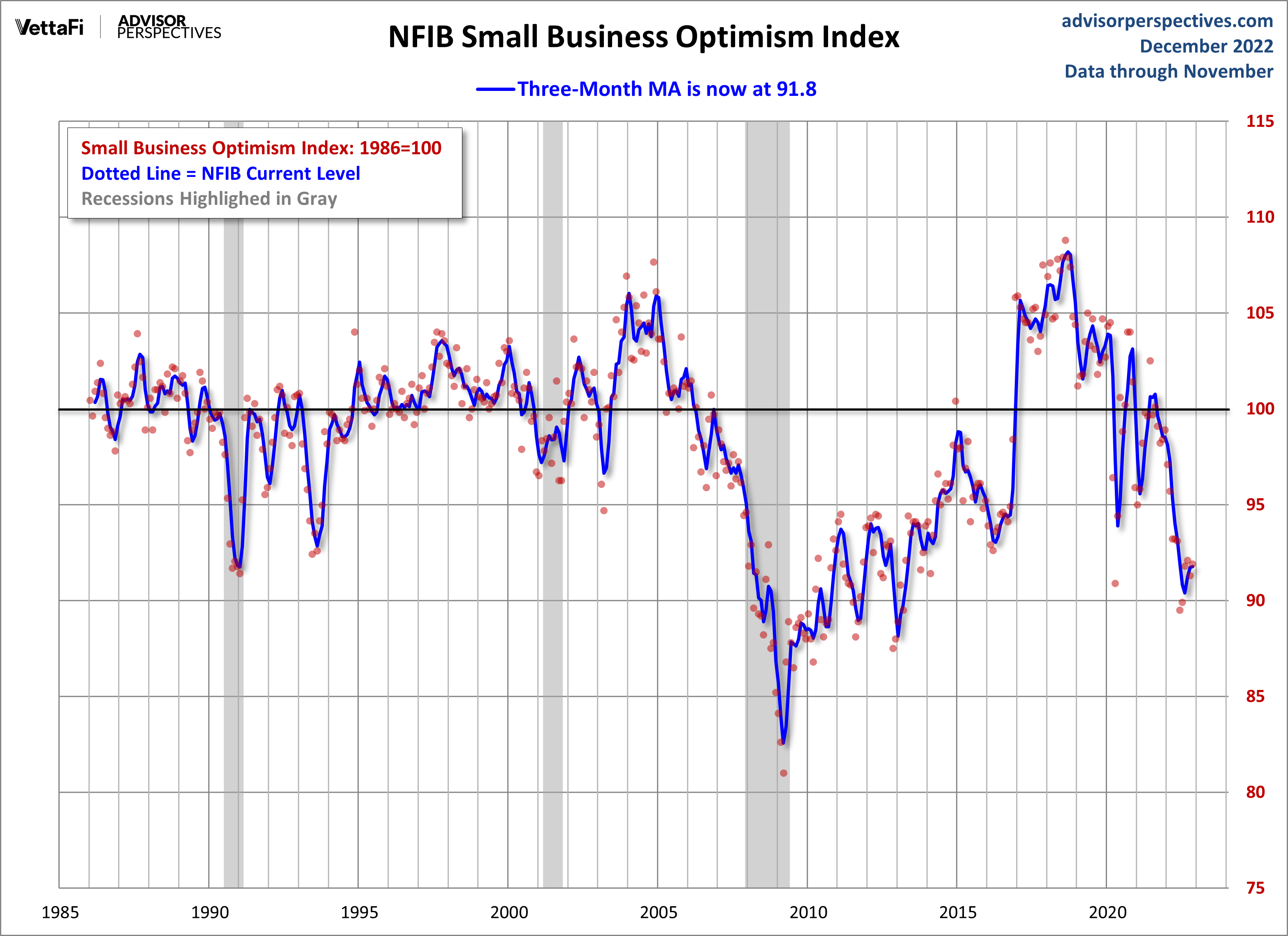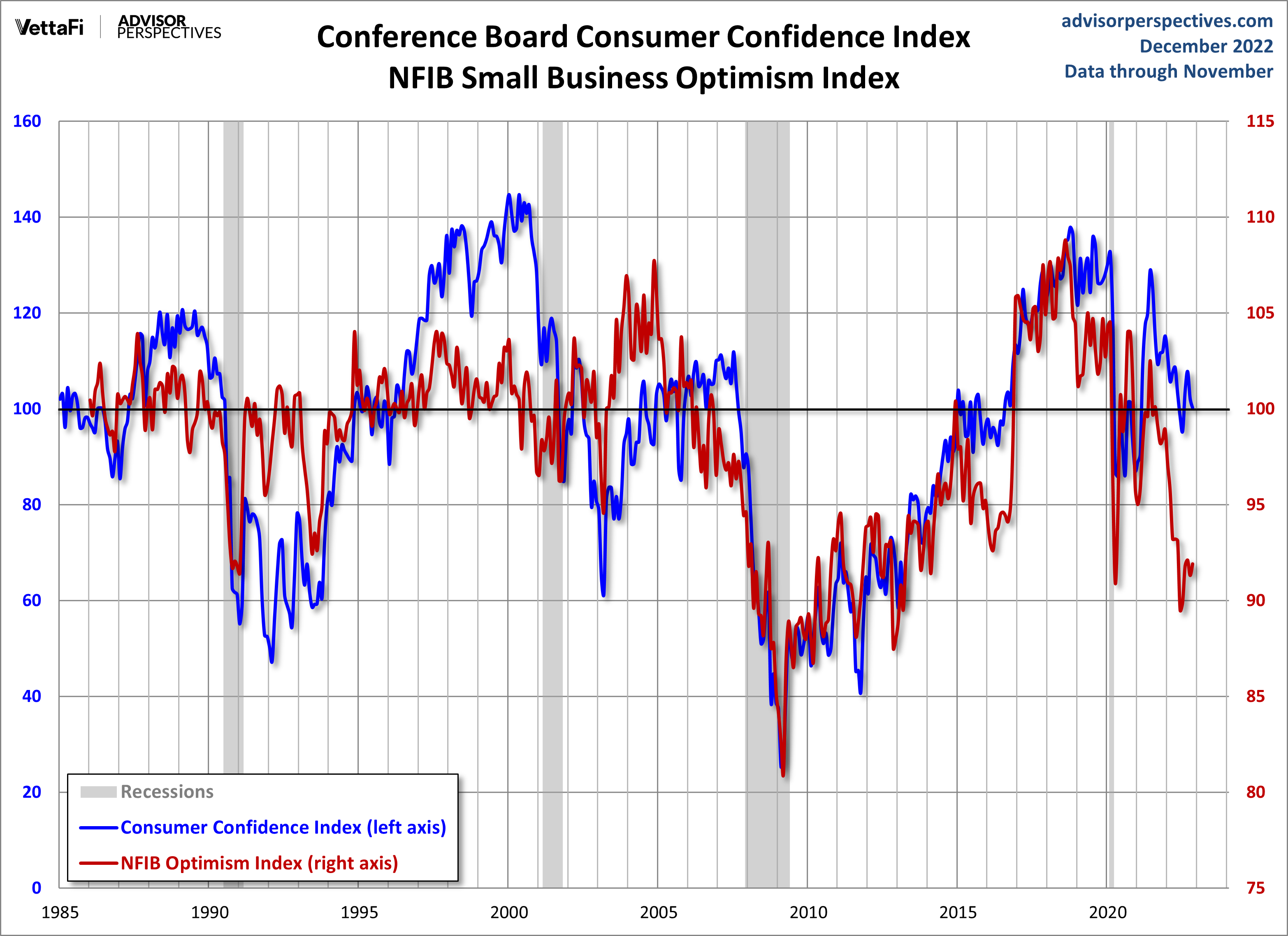NFIB Small Business Survey: Inflation Pressures Ease, But Prices Remain High
The latest issue of the NFIB Small Business Economic Trends came out this morning. The headline number for November came in at 91.9, up 0.6 from the previous month. The index is at the 12h percentile in this series.
Here is an excerpt from the opening summary of the news release.
“Going into the holiday season, small business owners are seeing a slight ease in inflation pressures, but prices remain high,” said NFIB Chief Economist Bill Dunkelberg. “The small business economy is recovering as owners manage an ongoing labor shortage, supply chain disruptions, and historic inflation.”
The first chart below highlights the 1986 baseline level of 100 and includes some labels to help us visualize that dramatic change in small-business sentiment that accompanied the Great Financial Crisis and now the COVID-19 pandemic. Compare, for example, the relative resilience of the index during the 2000-2003 collapse of the Tech Bubble with the far weaker readings following the Great Recession that ended in June 2009. A similar pattern happened beginning in 2019 and dropped drastically during the COVID-19 pandemic. Even after the bounceback, readings continue to drop.
Here is a closer look at the indicator since the turn of the century.
The average monthly change in this indicator is 1.4 points. To smooth out the noise of volatility, here is a 3-month moving average of the Optimism Index along with the monthly values, shown as dots.
Business Optimism and Consumer Confidence
The next chart is an overlay of the Business Optimism Index and the Conference Board Consumer Confidence Index. The consumer measure is the more volatile of the two, so it is plotted on a separate axis to give a better comparison of the two series from the common baseline of 100.
These two measures of mood have been highly correlated since the early days of the Great Recession. The two have diverged at brief periods and been highly correlated at others. At this point in time, they are quite divergent and NFIB has generally been in decline since June 2021. A decline in Small Business Sentiment was a long leading indicator for the previous two recessions (but clearly not for the Covid-19 recession).
More By This Author:
World Markets Update - Monday, Dec. 12U.S. Workforce: November 2022 Update
The Civilian Labor Force, Unemployment Claims And The Business Cycle - Monday, Dec. 12







